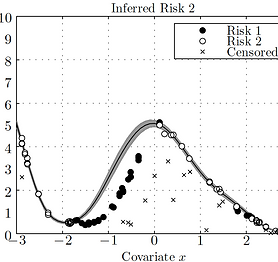Physics of Machine Learning
and Complex Systems

Research
We presently work mainly on the following six themes:
Machine learning and inference
Machine learning and inference are both concerned with finding patterns in data. In statistical inference this is done via formal mathematical and information theoretic models. Machine learning, in contrast, uses numerical algorithms in which parameters are updated in response to sequentially presented data. We focus mainly on transparent machine learning, based on algorithms with clear (Bayesian) statistical interpretations, and interpretable parameters.
Quantum computing
Quantum machine learning is the interesting interface between machine learning and quantum physics. Quantum annealing has been successfully applied to optimisation problems. We are interested in how the quantum formalism can be used to advance machine learning. First, to exploit quantum properties such as entanglement in classical data analysis. Second, to accelerate machine learning by implementation on quantum hardware.
Medical statistics
In medical statistics one tries to infer statistical patterns from patient data with which to predict the evolution of their disease or their response to treatments (`personalized precision medicine'). In collaboration with the UMC, we focus specifically on the statistical and computational problems associated with latent heterogeneity of patients and diseases, and on developing new methods for handling very high dimensional data without overfitting.
Control theory
Control theory describes formally how a system can move from a current state to a future state at minimal cost, where cost can mean time spent, or energy spent, or any other quantity. It is used traditionally to control industrial plants, airplanes or missiles, but is also the natural framework to model intelligent behavior in animals or robots. We work specifically on stochastic control theory for high dimensional systems.
Modelling of complex systems
In complex stochastic many-variable systems, many components interact with heterogeneous forces. They are found in physics (e.g. spin glasses), biology (e.g. neuronal, protein, and immune networks), economics (agent-based market models), data science (e.g. inference) etc. In our group they are studied using statistical physics techniques, such as replica theory and generating functional analysis.
Networks and graphs
Networks and graphs are powerful and popular representations of the structure of complex systems. We study mathematical properties and stochastic generation algorithms for tailored random graph ensembles. Our current emphasis is on sparse and `loopy' graphs, which are more realistic but which standard methods (cavity and replica methods, message passing algorithms), cannot handle.





